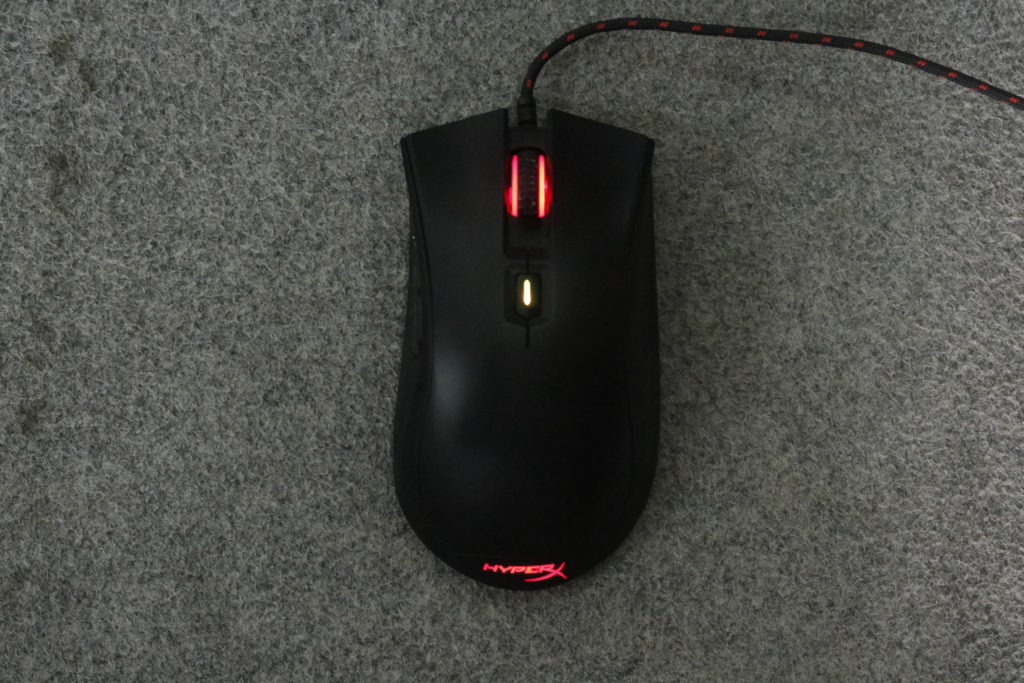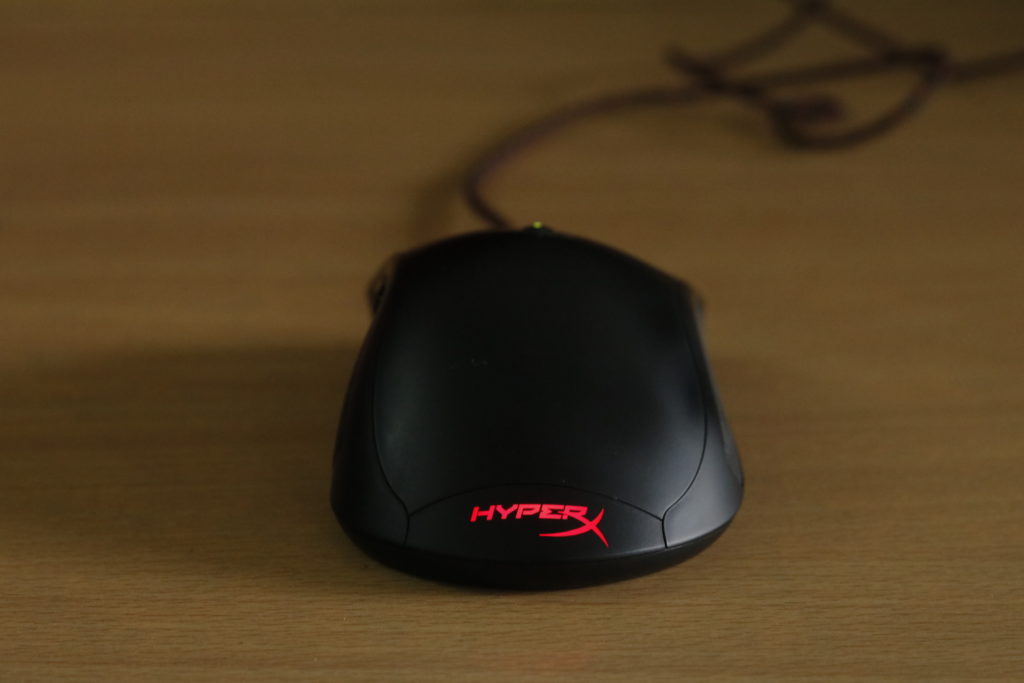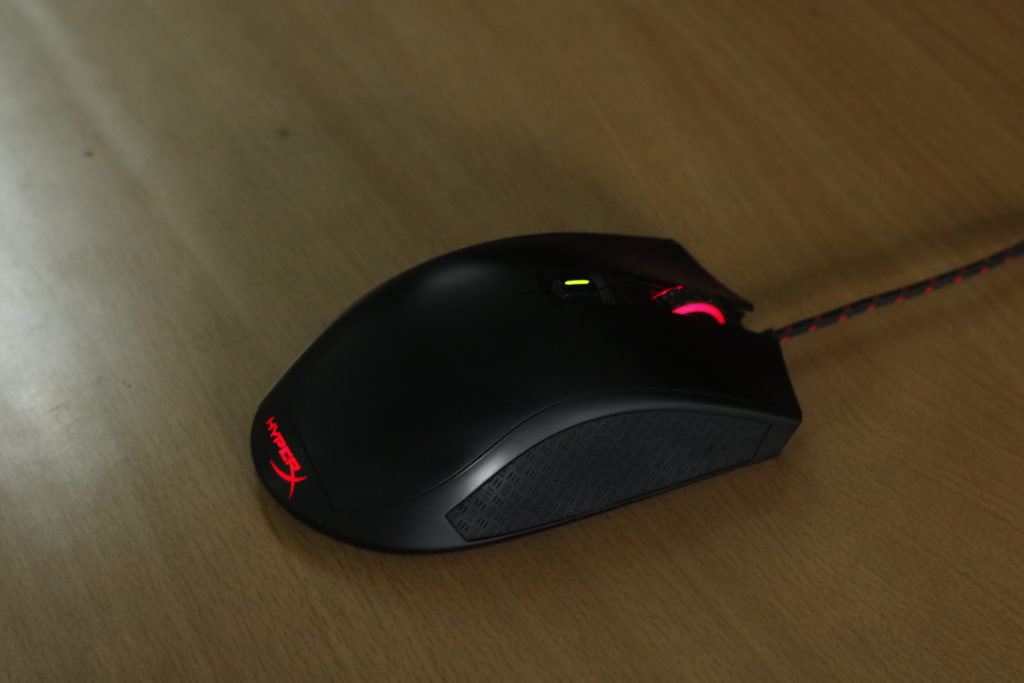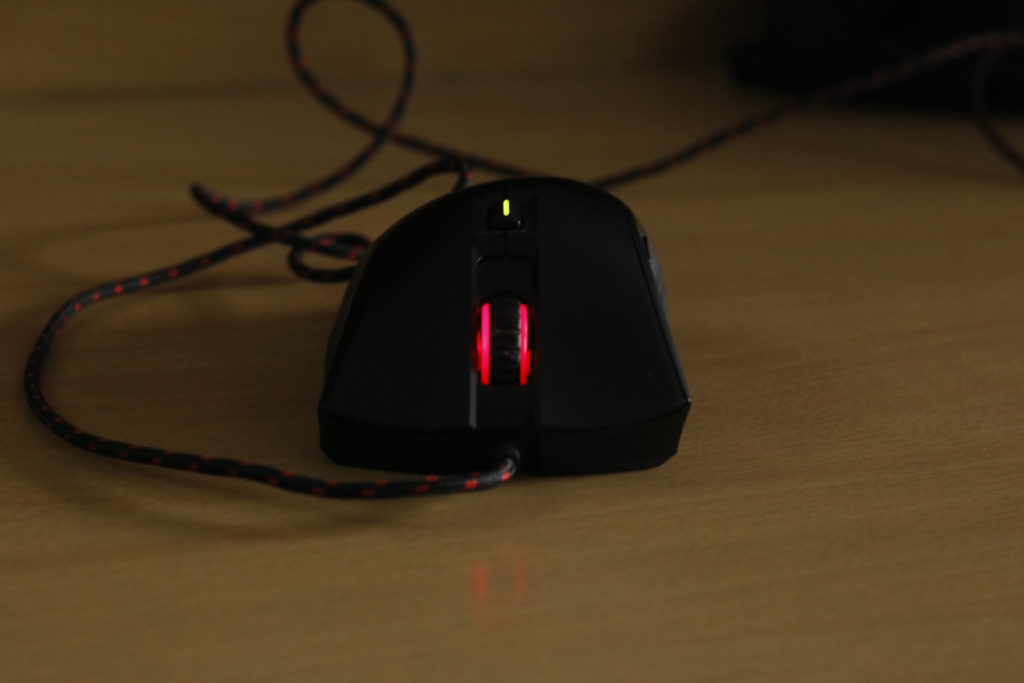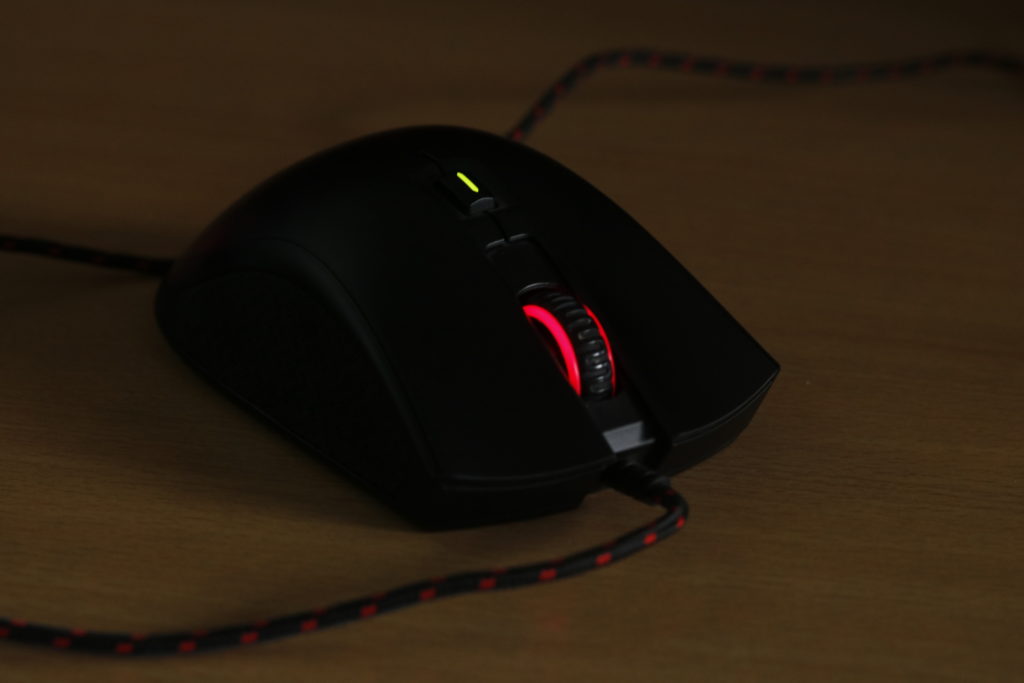Recently, we took a look at HyperX’s debut keyboard (and then another one). The company may be known more for headsets and memory sticks, but we were quite impressed their no-nonsense approach towards gaming keyboards. Today we have with us their debut gaming mouse, the Pulsefire FPS. Let’s find out how it fares, shall we?
At the first glance, you’ll find that the HyperX Pulsefire FPS bears a close resemblance to Razer’s DeathAdder. Once you get close, there are some differences, but they look more or less similar. It’s a simple mouse with the usual set of buttons; the left click, right click, mouse wheel, two thumb buttons on the side and one just behind the mouse wheel to switch DPI between presets. On both sides you can find rubber grips with a cross texture. There’s LED backlight too, with both the wheel and the HyperX logo towards the base glowing brightly in red.
HyperX has continued with their no-nonsense approach here as well, not providing any software for the mouse. While that makes it convenient in the sense that you don’t need to install anything extra and any possible settings can be changed through the mouse itself, it also means you can’t have a custom preset for, well, anything. For example, the DPI settings are prefixed, and even though you can switch between them at the press of a button, you can’t set them to a number of your liking. On the plus side, each DPI preset is indicated by a different colour; white for 400, red for 800, blue for 1600 and yellow for 3200.
The Pulsefire is an extremely comfortable mouse that fits snugly under the palm. Even during hours of continuous gaming, we barely experienced any discomfort. Both the left and right click buttons are quite responsive and so are the thumb buttons. They can be pressed easily without needing to apply much pressure and are not very loud either. The wheel is pretty silent too, but nothing too special about stands out. It does look pretty when lit up though.
One issue with the mouse is that its maximum DPI that it supports is 3200. While that is more than enough for 1080p, anyone who’s working at a higher resolution, especially 4K, would prefer a more sensitive option, maybe closer to 5000. Not to mention that there are a lot of competitors on the market that are already toting sensitivity as high as 12000 or 16000 DPI. Agreed, no one is going to go as high as 16000, but 3200 seems a bit low in today’s world. But all is not bad, because the Pulsefire has a Pixart 3310 sensor inside, which is still quite popular amongst FPS gamers, being known for its low lift-off distance and accuracy.
At a price point of INR 3350 (Amazon), it may seem a tad expensive, due to the lack of customization, but it’s the closest you can get to a DeathAdder while still maintaining a budget. But keep in mind that this is, in fact, one of the most comfortable mice we’ve used in its price range. Not to mention that it is entirely plug and play, meaning you can carry it, plug it in any system and get gaming without any hassles. For anyone who’s looking for a simple, no-frills mouse and doesn’t need a higher sensitivity to work, it’s quite an easy choice.
Register with us for the best in gaming, and join us for video game discussions on our forums.


